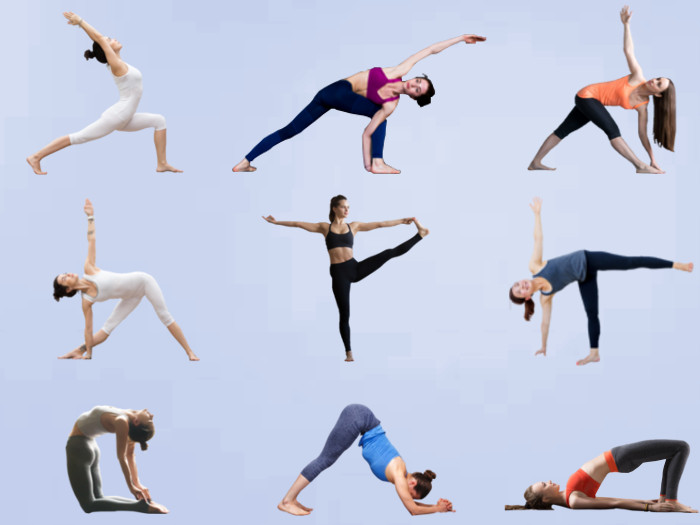Doing yoga for osteoporosis can be an excellent way to boost your overall strength and flexibility as you age.
Yoga is known to be good for many different health conditions, as it can increase flexibility and circulation, stimulate detoxification of the body, boost energy levels and strengthen the immune system. Yoga for osteoporosis is also a specialized type of this physical practice that can slow the development of this condition, and also work as a natural treatment if you already have osteoporosis. [1] [2]
Yoga Poses for Osteoporosis
There are a number of effective poses for osteoporosis, including the triangle pose, warrior pose, and camel pose, among many others.
Poses for Osteoporosis
- Bridge Pose
- Side Angle Pose
- Half-Moon Pose
- Standing Forward Bend
- Camel Pose
- Revolved Triangle
- Warrior Pose
- Big Toe Pose
- Dolphin Pose
- Triangle Pose

Yoga focuses your attention on your body’s abilities at the present moment. Photo Credit: Shutterstock
There are also certain tips to follow if you want to use yoga for osteoporosis:
- Focus on lengthening and stretching exercises [3]
- Only long-hold poses with neutral spine postures
- Bear weight with your hands whenever possible
- Try gentle backbends to stimulate flexibility
- Switch poses slowly to avoid injury [4]
- Add weights to increase difficulty, if desired
- Try mild side bends and twists, but be cautious with these poses
Postures to Avoid
Just as there are postures that can help with osteoporosis, there are others that can be risky or may exacerbate the problems, including the boat and plow poses, among others.
- Downward Dog
- Seated Twist
- Seated Forward Fold
- Boat
- Plow
Tips to Prevent Injury
There are also some general tips on how to prevent injury:
- Don’t try doing sit-ups or crunches
- Avoid poses that require spinal flexion
- Don’t practice intense side twists and bends
- Avoid fast-paced or overly competitive classes
- Don’t try major backbends, as this could result in injury
- Don’t start an inversion practice
- Listen to your body; if you feel pain, stop immediately

